Full text
PDF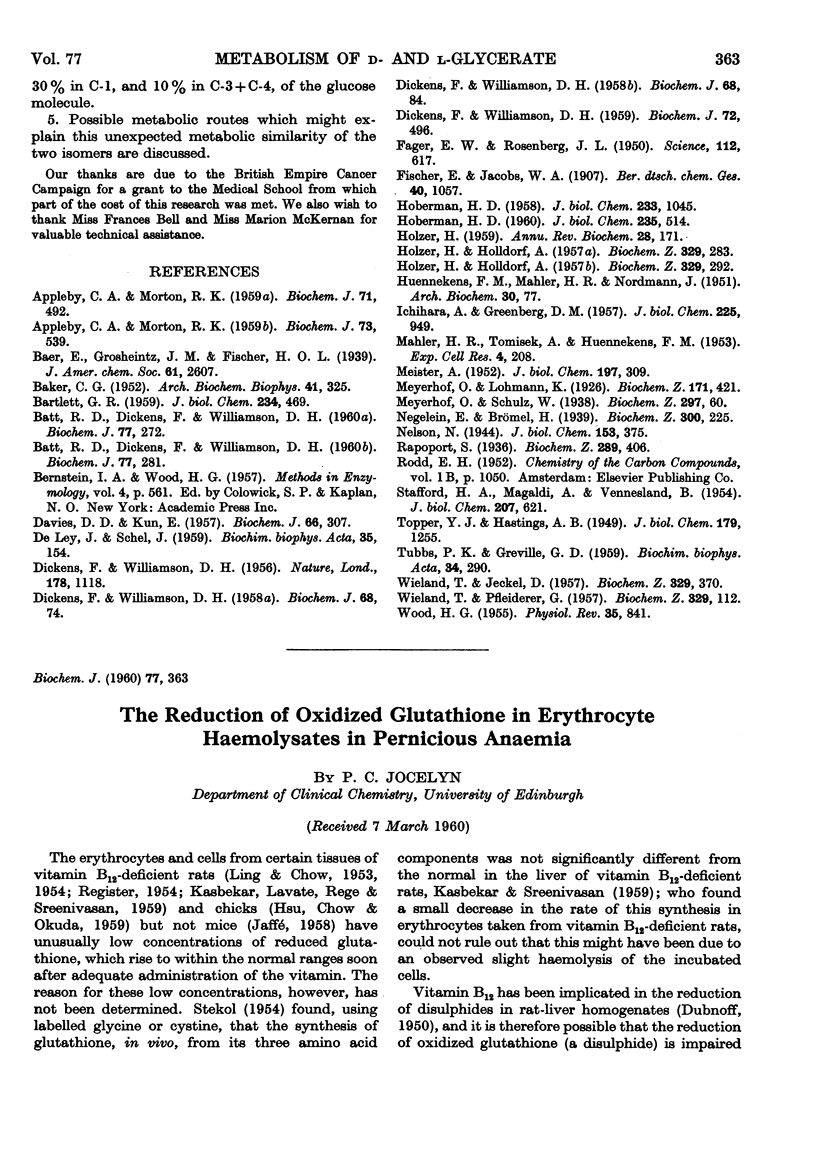
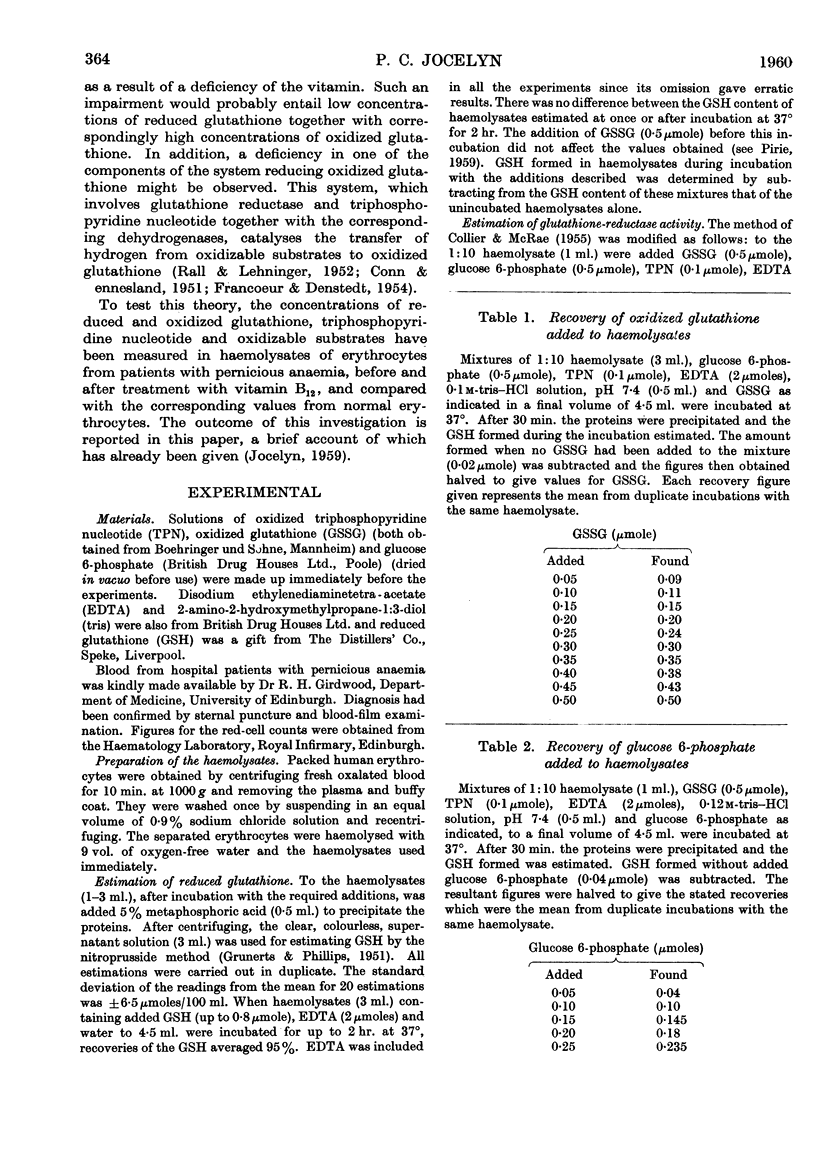
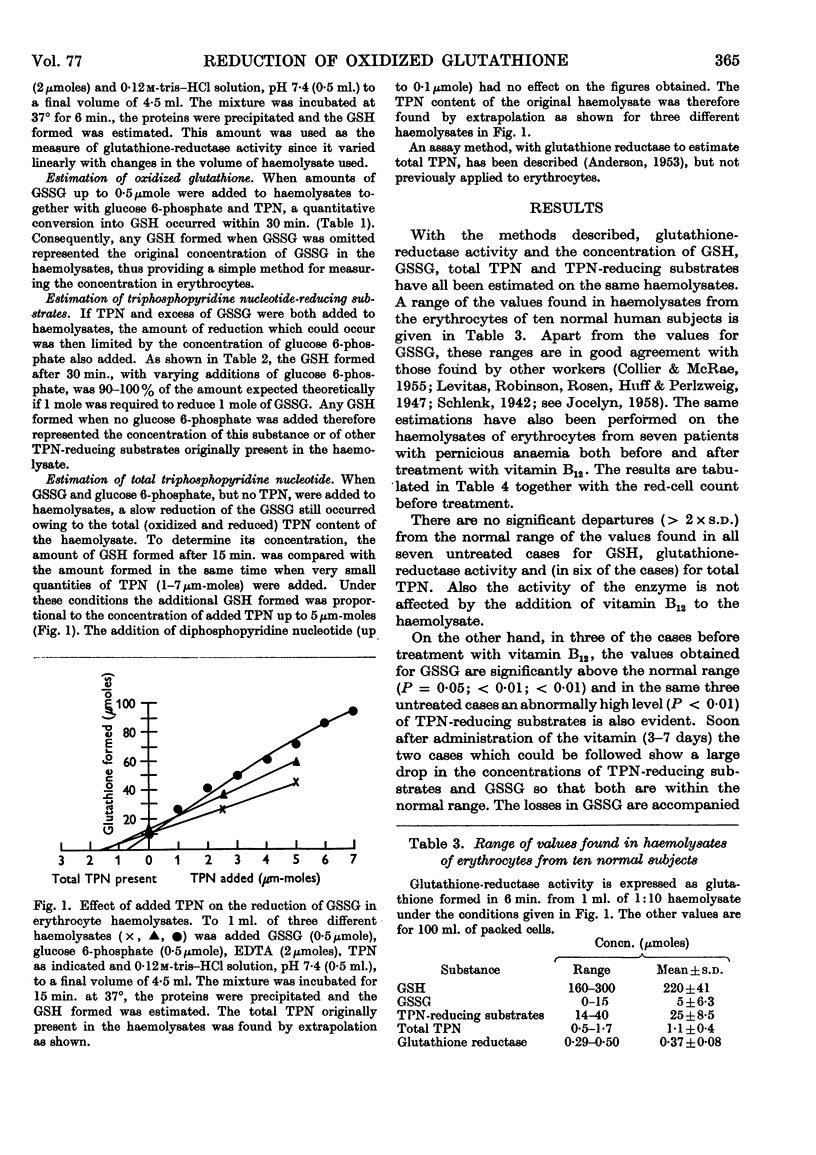
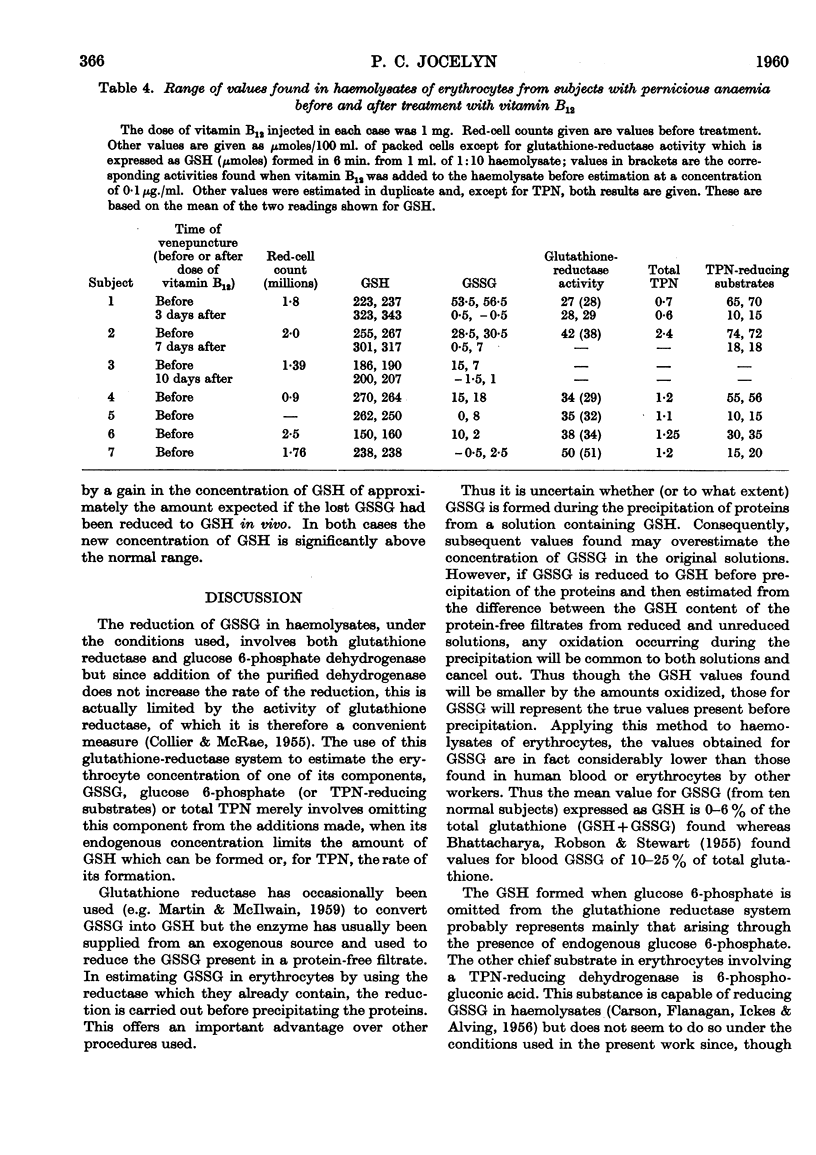
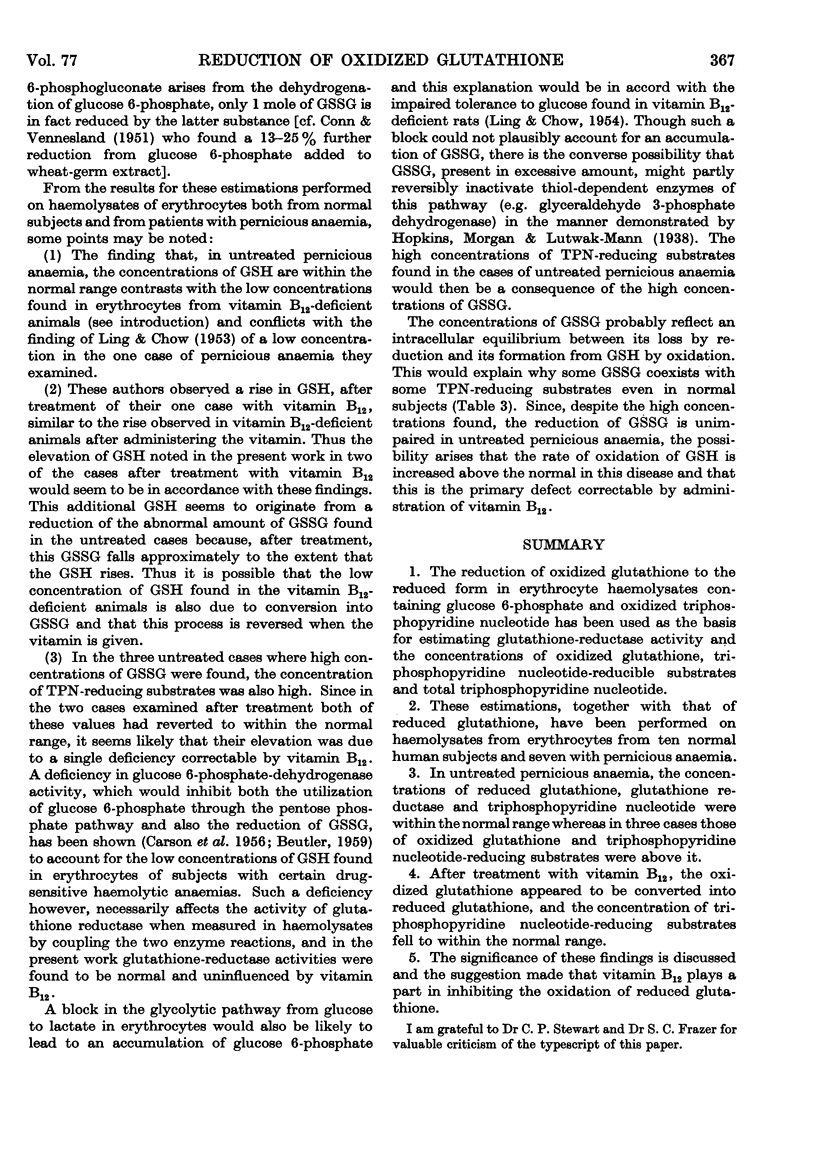
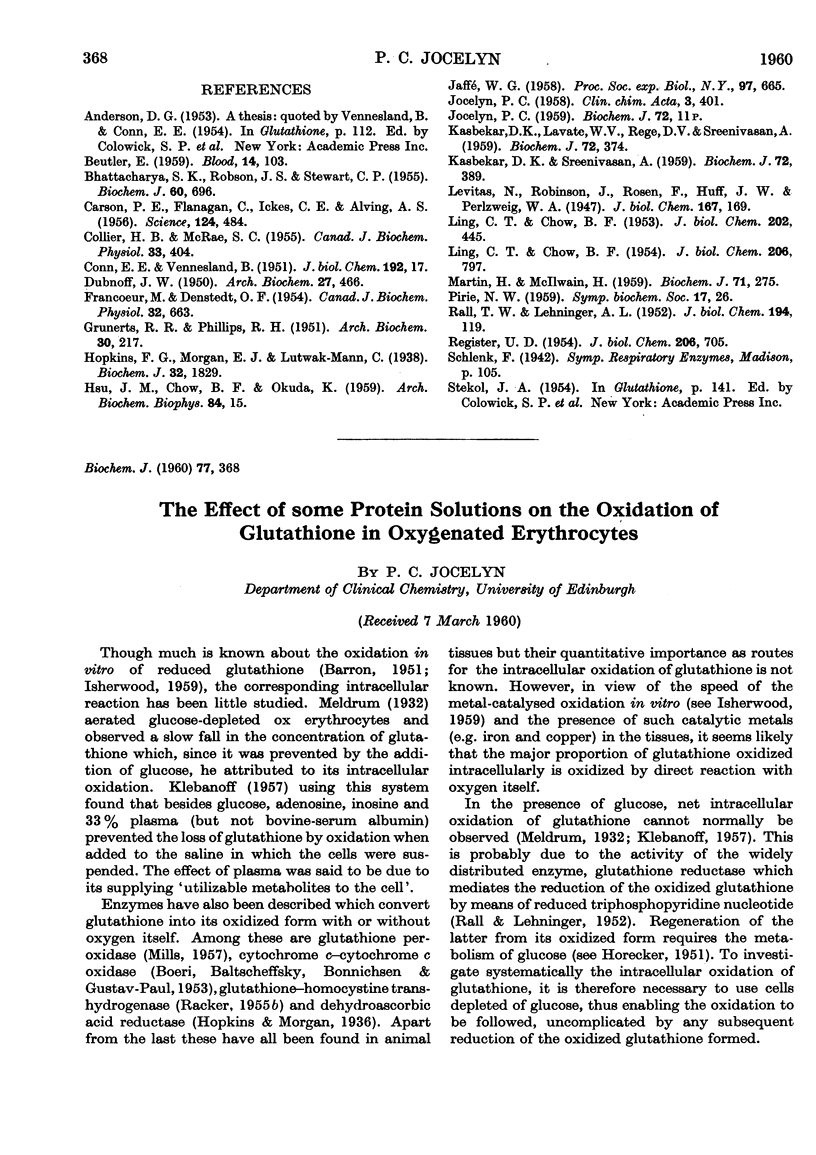
Selected References
These references are in PubMed. This may not be the complete list of references from this article.
- ALVING A. S., CARSON P. E., FLANAGAN C. L., ICKES C. E. Enzymatic deficiency in primaquine-sensitive erythrocytes. Science. 1956 Sep 14;124(3220):484–485. doi: 10.1126/science.124.3220.484-a. [DOI] [PubMed] [Google Scholar]
- BEUTLER E. The hemolytic effect of primaquine and related compounds: a review. Blood. 1959 Feb;14(2):103–139. [PubMed] [Google Scholar]
- BHATTACHARYA S. K., ROBSON J. S., STEWART C. P. The determination of glutathione in blood and tissues. Biochem J. 1955 Aug;60(4):696–702. doi: 10.1042/bj0600696. [DOI] [PMC free article] [PubMed] [Google Scholar]
- COLLIER H. B., McRAE S. C. The amperometric determination of glutathione reductase activity in human erythrocytes. Can J Biochem Physiol. 1955 May;33(3):404–407. [PubMed] [Google Scholar]
- CONN E. E., VENNESLAND B. Glutathione reductase of wheat germ. J Biol Chem. 1951 Sep;192(1):17–28. [PubMed] [Google Scholar]
- FRANCOEUR M., DENSTEDT O. F. Metabolism of mammalian erythrocytes. VII. The glutathione reductase of the mammalian erythrocyte. Can J Biochem Physiol. 1954 Nov;32(6):663–669. [PubMed] [Google Scholar]
- GRUNERT R. R., PHILLIPS P. H. A modification of the nitroprusside method of analysis for glutathione. Arch Biochem. 1951 Feb;30(2):217–225. [PubMed] [Google Scholar]
- Hopkins F. G., Morgan E. J., Lutwak-Mann C. The influence of thiol groups in the activity of dehydrogenases. II: With an addendum on the location of dehydrogenases in muscle. Biochem J. 1938 Oct;32(10):1829–1848. doi: 10.1042/bj0321829. [DOI] [PMC free article] [PubMed] [Google Scholar]
- JOCELYN P. C. The importance of thiol compounds in the causation of disease. Clin Chim Acta. 1958 Sep;3(5):401–418. doi: 10.1016/0009-8981(58)90031-7. [DOI] [PubMed] [Google Scholar]
- KASBEKAR D. K., LAVATE W. V., REGE D. V., SREENIVASAN A. A study of vitamin B12 protection in experimental thyrotoxicosis in the rat. Biochem J. 1959 Jul;72:374–383. doi: 10.1042/bj0720374. [DOI] [PMC free article] [PubMed] [Google Scholar]
- KASBEKAR D. K., SREENIVASAN A. Biosynthesis of glutathione by rat erythrocytes. Biochem J. 1959 Jul;72:389–395. doi: 10.1042/bj0720389. [DOI] [PMC free article] [PubMed] [Google Scholar]
- LING C. T., CHOW B. F. Effect of vitamin B12 on the levels of soluble sulfhydryl compounds in blood. J Biol Chem. 1953 May;202(1):445–456. [PubMed] [Google Scholar]
- LING C. T., CHOW B. F. The influence of vitamin B12 on carbohydrate and lipide metabolism. J Biol Chem. 1954 Feb;206(2):797–805. [PubMed] [Google Scholar]
- MARTIN H., McILWAIN H. Glutathione, oxidized and reduced, in the brain and in isolated cerebral tissue. Biochem J. 1959 Feb;71(2):275–280. doi: 10.1042/bj0710275. [DOI] [PMC free article] [PubMed] [Google Scholar]
- RALL T. W., LEHNINGER A. L. Glutathione reductase of animal tissues. J Biol Chem. 1952 Jan;194(1):119–130. [PubMed] [Google Scholar]
- REGISTER U. D. Effect of vitamin B12 on liver and blood non-protein sulfhydryl compounds. J Biol Chem. 1954 Feb;206(2):705–709. [PubMed] [Google Scholar]


